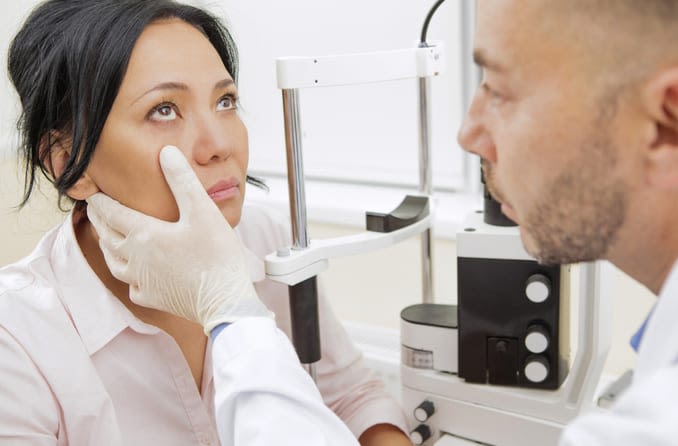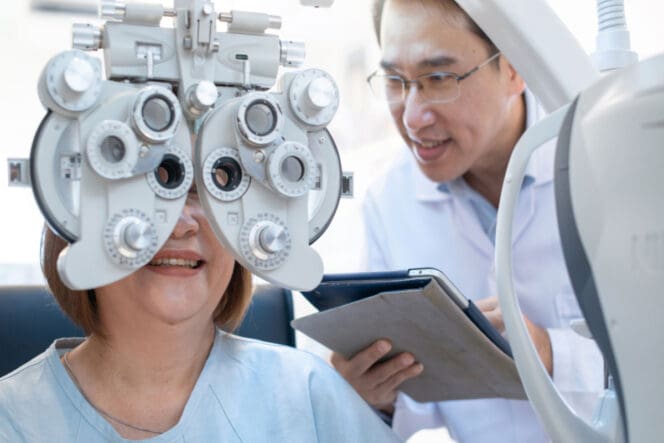Discover Advanced Services at Opticore Optometry for Eye Wellness
Discover Advanced Services at Opticore Optometry for Eye Wellness
Blog Article
Comprehending the Comprehensive Role of an Eye Doctor in Modern Eye Treatment
In the evolving landscape of health care, the range of an optometrist's function has considerably expanded, expanding well beyond the confines of typical vision improvement. With innovations in modern technology and a boosting emphasis on preventive care, optometrists are important in detecting and taking care of persistent eye problems, while also taking part in very early condition discovery. Their expertise in advanced diagnostic strategies such as optical comprehensibility tomography is vital. Exactly how do these duties converge with their function in advertising overall eye health and wellness, and what does this mean for patient outcomes in a collective health care atmosphere?
Expanded Range of Practice
In recent times, the role of eye doctors has evolved substantially, with many specialists currently welcoming an increased extent of practice that extends past conventional eye evaluations. This development reflects the expanding recognition of optometrists as key doctor in the field of eye treatment. Their obligations now incorporate a vast array of services, consisting of suggesting drugs for eye conditions, taking care of chronic eye diseases, and executing small procedures. This shift has actually been driven by advancements in optometric education and learning, boosted medical training, and the increasing demand for extensive eye care services, particularly in underserved locations.
Further, eye doctors are currently much more associated with joint treatment, functioning carefully with eye doctors, main treatment medical professionals, and other healthcare experts to make sure holistic client care. This interprofessional collaboration is vital in handling complicated instances that require a multidisciplinary approach. In addition, optometrists are playing a crucial function in public health and wellness initiatives, such as vision testings and eye health education and learning, intended at boosting community wellness outcomes.
The expanded scope of practice for optometrists not only improves their capability to supply detailed treatment however likewise addresses the expanding need for efficient and accessible eye care services, contributing to overall healthcare renovations.
Early Illness Detection
Early discovery of eye diseases is progressively coming to be a focal factor in the broadened function of optometrists. As main eye care providers, optometrists are distinctly placed to determine early indicators of ocular problems such as glaucoma, macular degeneration, diabetic retinopathy, and cataracts. This essential function is crucial, as very early medical diagnosis can dramatically improve the monitoring and prognosis of these conditions, possibly protecting against vision loss and enhancing individual outcomes.
Optometrists employ thorough eye examinations to identify refined changes in vision and eye wellness. The ability to identify very early indications of systemic wellness concerns, such as high blood pressure and diabetes, with ocular indicators even more highlights the significance of normal eye exams.
Furthermore, eye doctors play an important role in person education and learning, highlighting the significance of routine eye examinations as component of total health care. By cultivating a proactive strategy to eye care, optometrists add considerably to public health, making sure illness are caught and managed efficiently prior to they can progress.
Advanced Diagnostic Methods
Advanced analysis techniques have revolutionized the practice of optometry, making it possible for specialists to find and check eye diseases with unmatched accuracy. These innovations have actually transformed the optometric landscape, permitting for more advanced evaluation and intervention approaches. Technologies such as optical coherence tomography (OCT) offer high-resolution, cross-sectional photos of the retina, helping with early discovery of conditions my explanation like glaucoma and macular degeneration. This non-invasive technique has ended up being important in modern optometry, supplying in-depth insights right into retinal layers.
One more crucial innovation is digital retinal imaging, which catches comprehensive views of the retina using high-definition cams. This modern technology is critical in recognizing modifications in retinal framework over time, thus helping in the management of conditions like diabetic person retinopathy. Visual field testing, boosted by computer-aided systems, enables precise mapping of a person's line of vision, necessary in diagnosing and tracking glaucoma progression.
Corneal topography, one more significant analysis device, generates in-depth maps of the cornea's surface area. This is especially valuable in fitting call lenses and planning refractive surgical treatment. These sophisticated diagnostic strategies collectively allow optometrists to offer positive, targeted care, guaranteeing much better person outcomes and strengthening their pivotal duty in eye wellness monitoring.
Managing Persistent Eye Problems
Managing chronic eye problems is a cornerstone of optometric care that needs a thorough understanding of various ocular illness and their long-lasting implications. Eye doctors play a pivotal other function in handling, monitoring, and diagnosing problems such as glaucoma, diabetic retinopathy, and age-related macular deterioration. These problems, if left unattended, can cause substantial visual disability or blindness, highlighting the critical significance of ongoing treatment and administration.
Eye doctors utilize a range of analysis tools, including optical comprehensibility tomography (OCT), aesthetic area screening, and fundus digital photography, to analyze the progression of these persistent problems. By carefully keeping an eye on changes in eye wellness, optometrists can adjust treatment plans to minimize disease progression. This may involve recommending drugs, suggesting way of life alterations, or coordinating with eye doctors for surgical treatments when needed.

Function in Preventive Care
Preventive care is an essential facet of optometry that concentrates on maintaining eye health and preventing the start of eye conditions. Optometrists play an important function in early detection and avoidance, utilizing normal eye exams to recognize threat aspects and refined modifications in ocular health. Eye Doctor Optometrist. These evaluations are not simply concerning vision modification yet incorporate a detailed assessment of eye features and frameworks, making it possible for the identification of conditions such as glaucoma, cataracts, and macular deterioration at an early phase
In enhancement to diagnostics, optometrists educate individuals on way of life choices that promote eye health, such as correct nutrition, UV protection, and the importance of regular eye exams. They recommend on the right usage of digital tools to prevent digital eye strain, a growing worry in the digital age. Optometrists also supply guidance on safety eyewear for work and entertainment activities, reducing the threat of injury.
Preventive eye treatment encompasses systemic wellness issues that materialize in the eyes, such as diabetes mellitus and high blood pressure. By collaborating with other health care experts, optometrists add to all natural patient treatment, emphasizing the interconnectedness of ocular and systemic wellness. This proactive strategy is crucial in protecting aesthetic acuity and general health.
Conclusion
Optometrists now inhabit an essential duty in modern-day eye treatment, identified by an expanded extent that consists of detecting and handling persistent eye problems, recommending medicines, and doing small surgeries (Eye Doctor Optometrist). Their proficiency in very early condition detection is enhanced by innovative analysis techniques such as optical comprehensibility tomography and electronic retinal imaging. By stressing precautionary care and patient education and learning, eye doctors contribute significantly to total eye health and wellness, working together with other medical care experts to guarantee comprehensive and reliable person results

In enhancement to diagnostics, optometrists enlighten patients on way of life choices that promote eye wellness, such as proper nutrition, UV defense, and the importance of routine eye exams.Preventive eye care expands to systemic health problems that show up in the eyes, such as diabetes and hypertension.Optometrists currently inhabit a pivotal function in contemporary eye treatment, characterized by a broadened range that consists of detecting and managing chronic eye problems, suggesting drugs, and performing small medical procedures.
Report this page